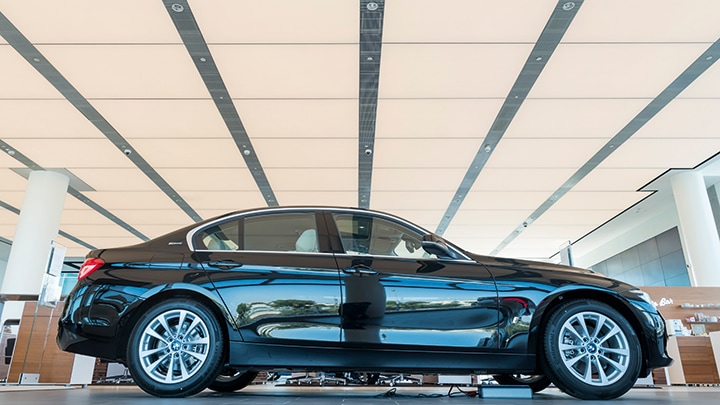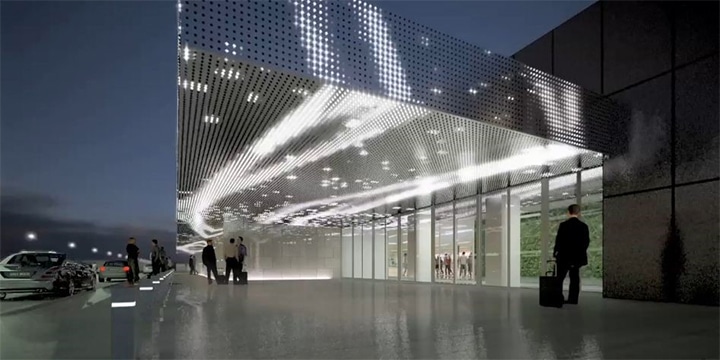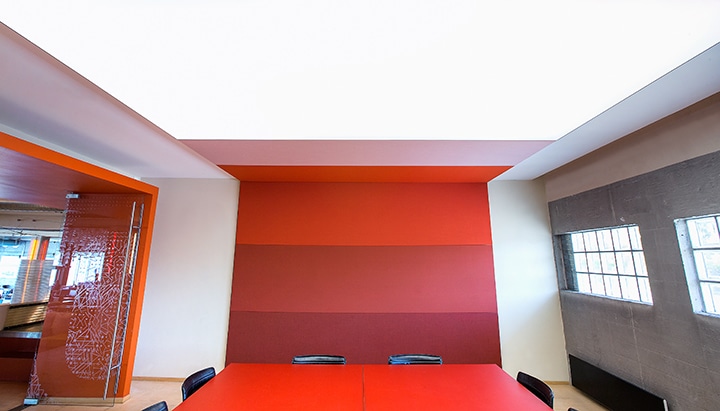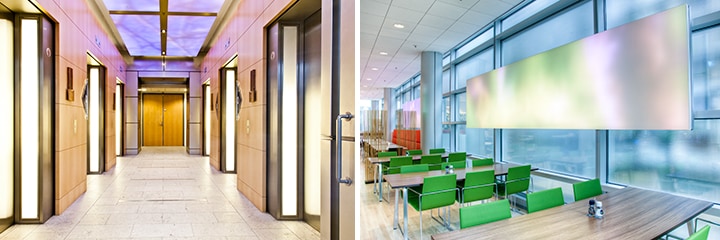
Architectural lighting typically features a light source placed discreetly out of the way, constrained to its fixtures. What’s more, architects want to treat light as a material, something that they can play with and incorporate into the interior design of a space.So, how do we evolve lighting design to match the high-tech world we live in?
Embedded lighting is the answer. Meet our two solutions: Philips OneSpace luminous ceiling and Philips luminous textile with Kvadrat Soft Cells. Lighting the way to a dynamic future, they switch up your space while enabling complete architectural freedom.
How people experience places
Following the idea behind mid-century modernist philosophy, embedded lighting centres on stripping away unnecessary embellishments and focusing on form. In other words – less is more!
This allows architects and interior designers to play with the light itself. For example, designer Leo Villareal created a concept proposal for the lighting in Bahrain airport that features a dazzling spectacle of light. Swapping out traditional downlights for a canvas of dynamic lighting that can take different shapes and patterns, it becomes an integrated, welcoming part of the space.
Embedded lighting provides a revolutionary set of advantages to both the designer and the end-user; much like looking at lighting through a new and unique lens.

Turning the ceiling into a blank canvas
One form of embedded lighting promises to change the way we approach lighting design.
Philips OneSpace luminous ceiling is the definition of minimalist. Free from the constraints of traditional lighting fixtures, the illuminating panels can transform any interior into one cohesive space.
Simple to install and easy to maintain, they are available in a range of sizes perfect for your chosen space. And thanks to its homogeneous, dimmable light, it feels as good as it looks.


Bring your space to life
The Breitner Tower (former global headquarters of Philips) in Amsterdam has used luminous textile panels to create a striking design statement with embedded lighting.
Dotted throughout the company headquarters, they have transformed the space; from providing a dynamic backdrop to the restaurant, covering the wall of the boardroom, to spotlighting the elevator ceilings, they work in almost any environment.

Enhanced with acoustic properties, the textile material also dampens sound and softens echoes, taking the functionality further than just providing light.
On top of this, the textile material provides aesthetic qualities even when the luminous panels are switched off. This allows architects and designers to play with their tactile nature, elevating a space with textural elements and allowing for total creative freedom.
Offering benefits beyond illumination, embedded lighting is an exciting step forward into the future.

November 14, 2023
How lighting technology can help reduce risks to migrating birds